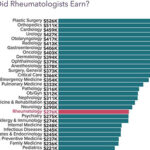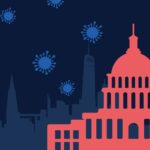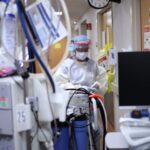In the early days of the COVID-19 pandemic, governments and communities had to take rapid and decisive action to protect their citizens against this novel virus. While it was yet unclear how dangerous the COVID-19 infection may be to children, their teachers, and their families, governments quickly shut down schools and activities to slow the spread among the population at large.
Before the pandemic, childhood obesity was already a crisis with a prevalence of 19 percent among 2- to 19-year-old children. But in the two short years since the massive shutdowns of schools and activities were instituted, the obesity rate among youth between 2 and 19 years of age took another leap to a current prevalence of 22 percent. The monthly rate of increasing body mass index (BMI) nearly doubled during the pandemic.
The same factors that contributed to obesity before the pandemic, such as decreased physical activity, consumption of unhealthy food, and excessive screen time, all worsened in scope. With schools closed, children spent hours upon hours sitting in front of a screen for instruction and homework. Non-academic screen time increased as well, with parents needing to work from home and thus relying more on screens to occupy the children. Parents also were unable to police screen time as much as they had in the past. Much built-in physical activity of school was removed: from the simple act of walking between classes to recess to physical education to field trips.
I have started wondering what would happen if we approach the obesity crisis like we approached the pandemic? By using the strategies that were used to “stop the spread,” I believe we can reverse this trend of burgeoning childhood obesity rates. Here are five effective pandemic strategies that can be directly applied to the childhood obesity pandemic:
Stop placing the burden of the childhood obesity crisis and its solution on individual responsibility. Rather, address the obesity epidemic as a nationwide effort just like we did for minimizing the spread of the COVID-19 virus. This will require mandating certain public policy measures as we did for the pandemic. What would have happened if we left it up to individuals to decide whether they wanted to wear a mask, to decide whether they wanted to close their businesses, to decide whether they should gather in large groups? We would have massively failed. Some would argue that we did massively fail initially when leaders hesitated to put mandates in place.
Institute actionable, simple steps. For example, for the pandemic the actionable simple steps were the “3 Ws”: wear a mask, wash your hands, watch your distance. For obesity, we know the effective, actionable steps include 60 mins of exercise per day, eating five fruits and vegetables per day, and limiting screen time to 2 hours per day. Or, as my friend Dr. Shirley Russell expressed it, the “3 Es” of exercise, eating properly, and eliminating excessive screen time.
Saturate the environment with needed information. The simple steps mentioned above should be a constant message in every environment where children spend time: school, home, social media and as public health messages on television. As examples from the pandemic: every store you walked into had signs reminding you to wear your mask and watch your distance; there were markers on the floors that were six feet apart to help you maintain proper physical distancing. There were public health messages during television commercial breaks.
Saturate the environment with the tools needed to implement these steps. Physical activity opportunities should be convenient and abundant. Healthy food should be easily accessible (e.g., there should be no food deserts). Screens need to be harder to access. An example from the pandemic: at the entrance of every store or building was hand sanitizer to make it easy to wash your hands.
Invest government and corporate money to create these changes. It will require investment to make healthy food and healthy spaces, such as recreation centers and safe playgrounds, accessible. As an example from the pandemic: COVID testing was free to the public, and COVID vaccinations were free to the public. These governmental investments were made to ensure proper testing and effective vaccination rates to defeat the pandemic. We were all in this together.
If we simply have the collective will to attack the threat to child welfare posed by childhood obesity, we can make great strides toward reversing this dangerous trend.
Teresa Fuller is a pediatrician.
Image credit: Shutterstock.com










![[keyword]](https://librareview.com/wp-content/uploads/2024/02/education-5517017_960_720-150x150.jpg)








